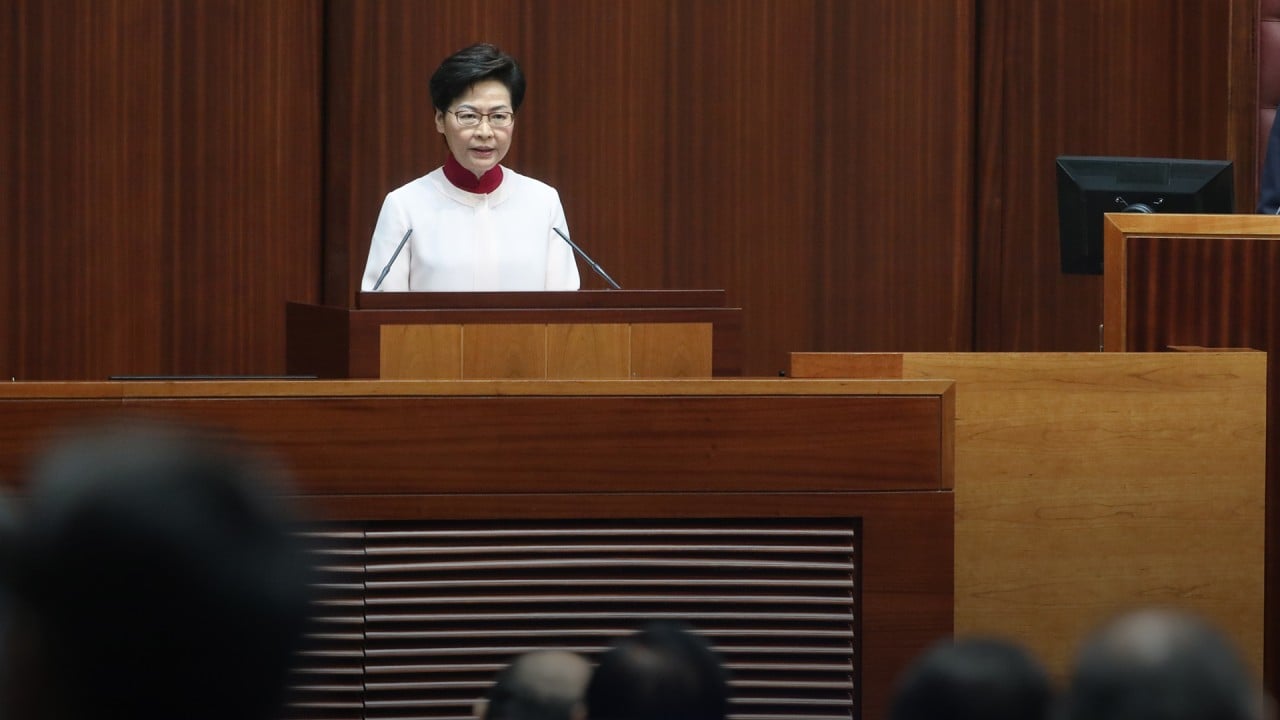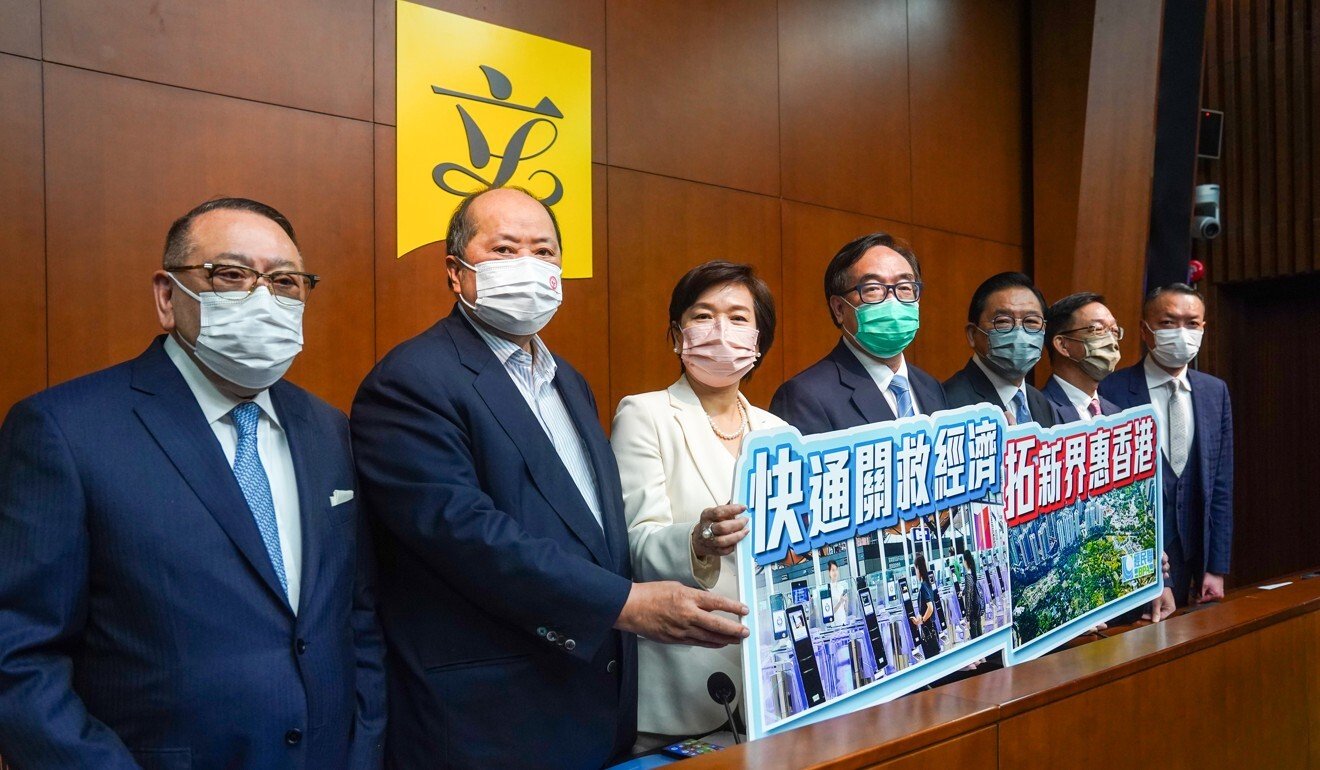
Northern Metropolis or ‘castle in the air’? Critics mostly agree on direction of Hong Kong leader’s policy blueprint, but question cost of grand plans
- Carrie Lam does not give an estimate on cost of mega project, but suggests it will be financially sustainable
- Lack of definite figures leads observers and lawmakers to voice fears scheme could end up being financial burden on city
Hong Kong’s leader is taking the city in the right direction with her ambitious Northern Metropolis proposal and other measures to boost economic development, analysts and lawmakers have said, while also urging her to elaborate on how to finance such plans.
In the speech, Lam’s fifth and final one for her current term, the city’s leader proposed building a metropolis near the border which can yield up to 926,000 flats, more than 40 per cent of which had already been planned in some new developments in Yuen Long and North districts in the New Territories.

03:43
Hong Kong leader Carrie Lam gives last policy address of current term, ending on emotional note
Lam did not give an estimate on how much the project would cost, but suggested it would be financially sustainable.
The lack of definite figures led observers and lawmakers to voice fears the mega project to develop 300 sq km could end up being a financial burden on the city, as Lam had in a previous blueprint already proposed a massive reclamation plan, the Lantau Tomorrow Vision.
“The direction is correct but how the plan is to be executed is an issue. If Hong Kong still follows the old way of developing, going through endless studies, zoning and consultation, the Northern Metropolis will only remain a castle in the air,” Hung said.
Carrie Lam gives no timetable for full reopening of border with mainland
Ryan Ip Man-ki, head of land and housing at the policy think tank Our Hong Kong Foundation, shared similar views and proposed the government set up a high-level unit or statutory body to oversee the metropolis project, cutting through bureaucracy.
That was despite Lam proposing that a new senior post would be created under the chief secretary or financial secretary to oversee the two new development projects.
In the business sector, the Hong Kong Chinese Importers’ and Exporters’ Association issued a statement praising Lam for her regional integration plans.
The body also said it backed Lam’s plan to boost the city’s status as an international shipping hub.

But financial services lawmaker Christopher Cheung Wah-fung, a vice-chairman of the Business and Professionals Alliance for Hong Kong (BPA), argued that Lam should have offered more help for local financial institutions to set up office in Qianhai, an economic zone in Shenzhen created to spur Hong Kong-mainland Chinese ties.
Jeffrey Lam Kin-fung, another BPA vice-chairman, also said the government needed to elaborate on its plans to support the tourism industry and the exhibition and convention centres.
Some other groups, such as centrist party Third Side, expressed disappointment that the policy address failed to offer a blueprint on border reopening.
Caspar Wong Chun-long, vice-chairman of the group, said while Lam stressed her administration’s “top priority right now” was to resume the “normal cross-boundary flow of people”, she did not offer any suggestion on how she was going to achieve this.
Hong Kong leader floats biggest government restructuring in 14 years
The city’s largest pro-establishment party, the Democratic Alliance for Betterment and Progress of Hong Kong, also said it was upset Lam did not address the issue of border restrictions.
But they hailed her plan to restructure the government.
DAB chairwoman Starry Lee Wai-king said: “We will continue to urge the government to establish a policy development and reform unit … and introduce key performance indicators so that ministers can be more accountable.”
Opposition activist Lo Kin-hei, chairman of the Democratic Party, the city’s biggest opposition group, argued that Lam had placed too much emphasis on fitting into mainland development.
“It seems Lam is keener on pleasing Beijing than on connecting with the people. In her last policy address in her term, she should have made use of the opportunity to rebuild the people’s trust in her,” he said.
6 key takeaways from Hong Kong leader Carrie Lam’s policy address
Lo claimed the administration’s restructuring might not help improve governance if senior officials continued to be detached from the people, or lacked mutual trust with them.
Political scientist Chan Wai-keung of Polytechnic University also said the social divide remained worrying, despite the chief executive’s grand plans.
“Lam has boasted about how much she has achieved during the past few years but there seems to be no mention of her inadequacies. She seemed to think the 2019 social unrest was all because of the opposition camp and foreign forces,” he said.
Chan added that while people’s verdicts on her livelihood policies might be mixed, many would agree that Hong Kong had become more polarised since Lam took office in 2017.


